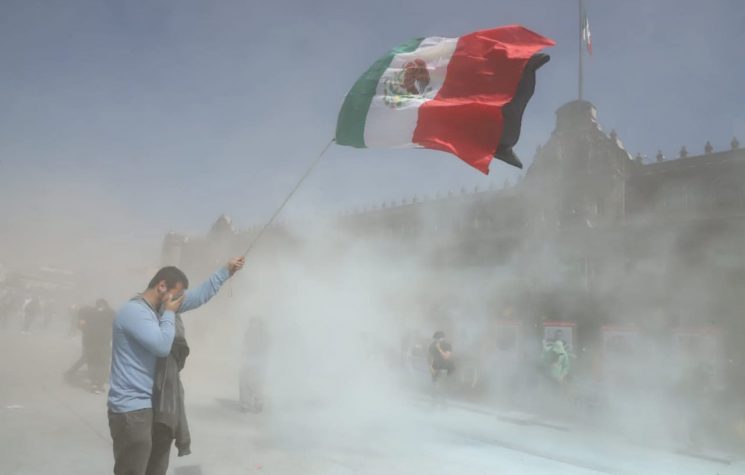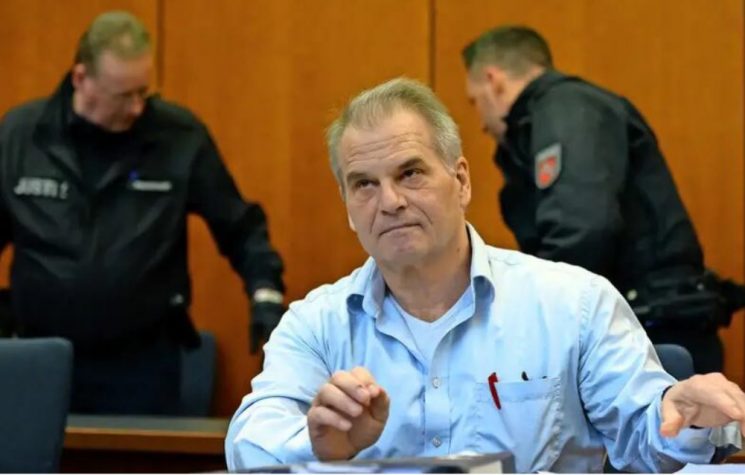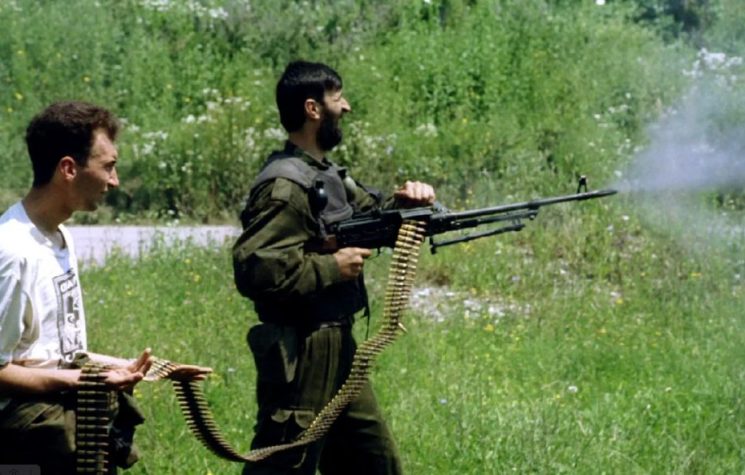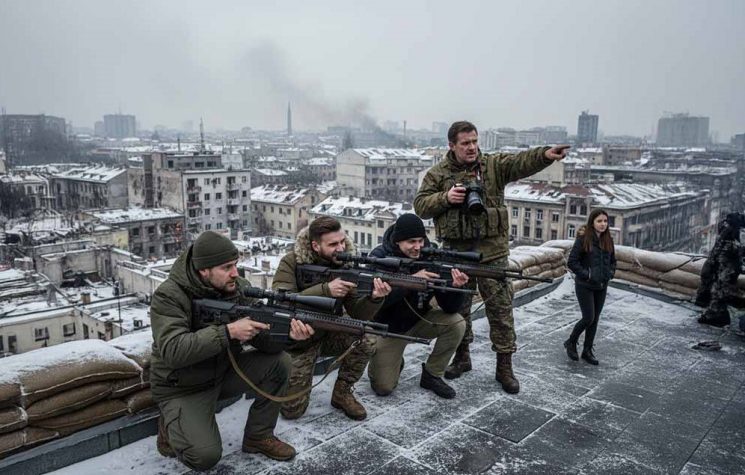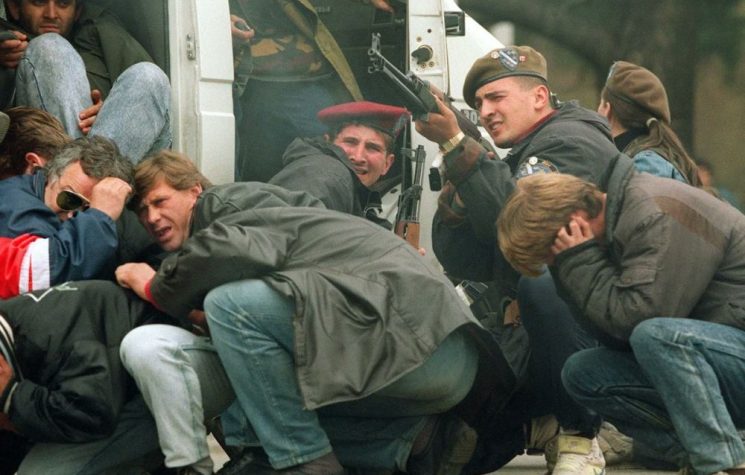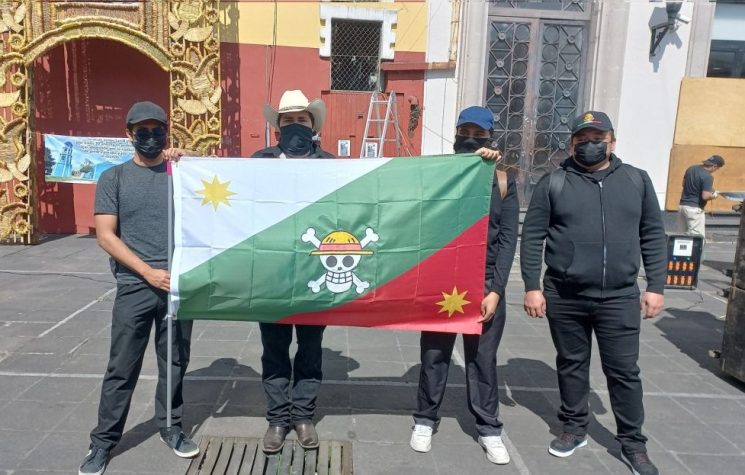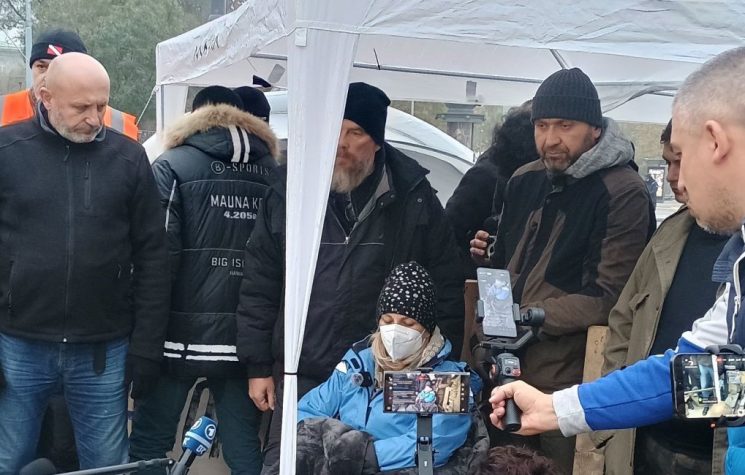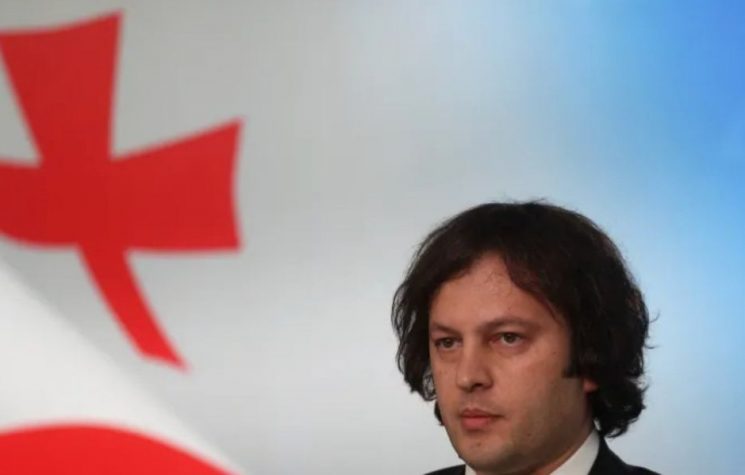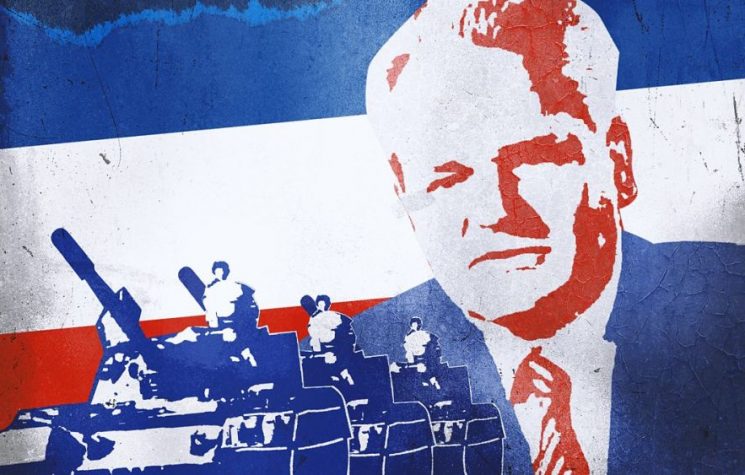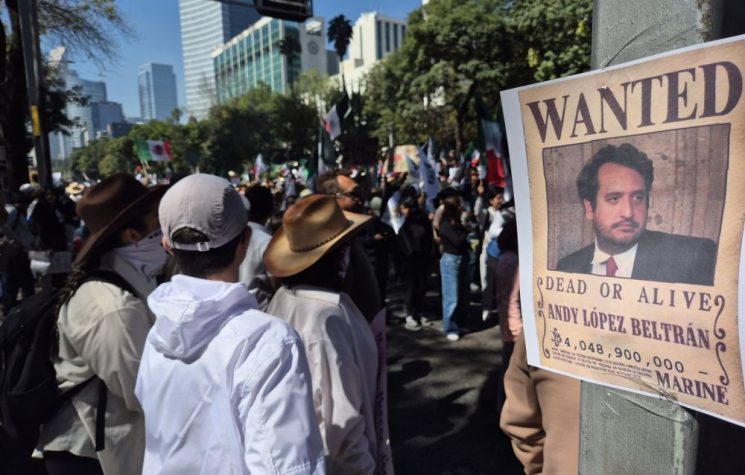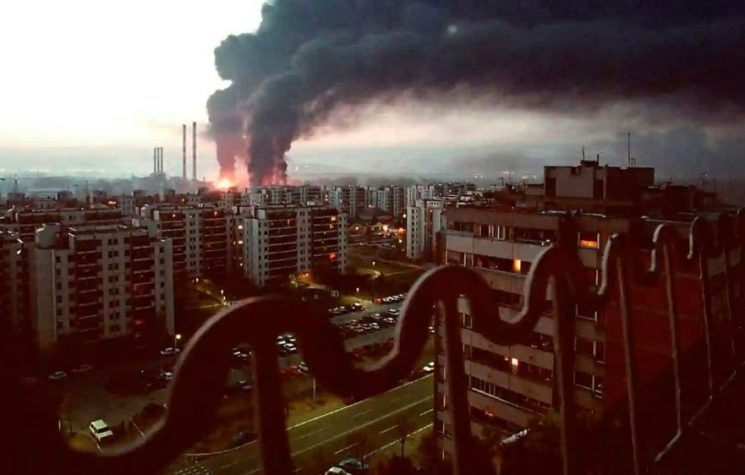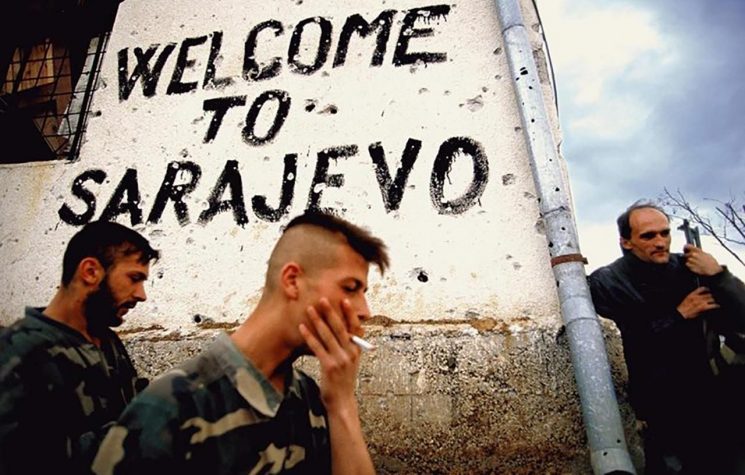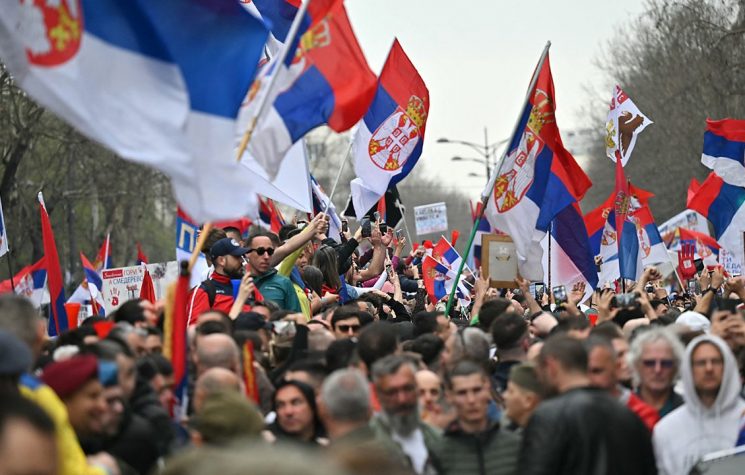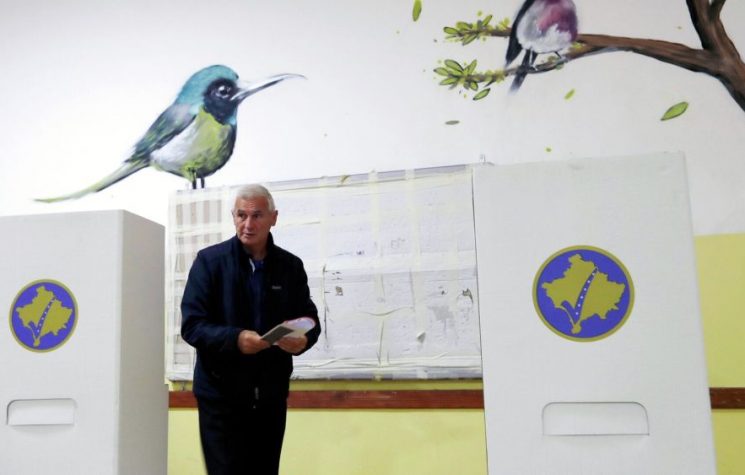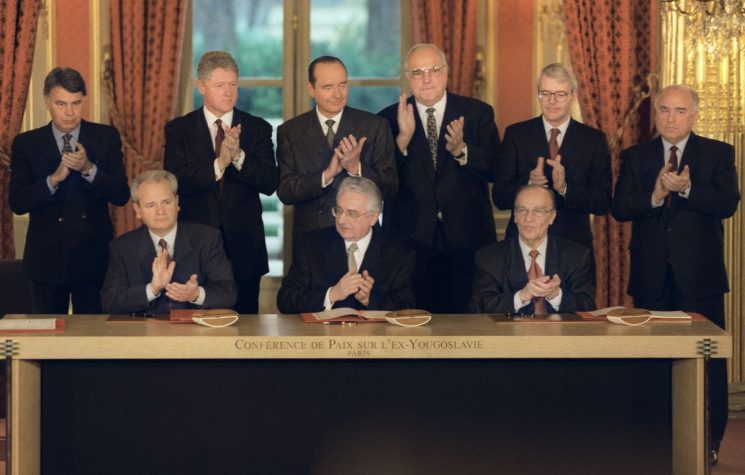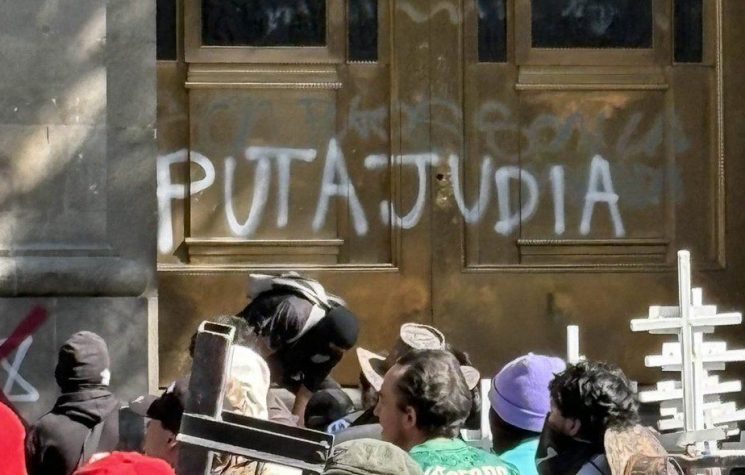Pieces of the puzzle of Serbian student protests, which are acquiring the character of a full-scale social rebellion, are finally falling into place.
Contact us: info@strategic-culture.su
Pieces of the puzzle of Serbian student protests, which are acquiring the character of a full-scale social rebellion, are finally falling into place. The current commotion started when on 1 November 2024, a concrete canopy at the recently remodelled railway station building in the northern city of Novi Sad collapsed, crushing seventeen people and killing fifteen. Not long before, the entire building, including the canopy, was reconstructed by negligent and incompetent “contractors” selected by the ruling authorities. The “reconstruction” job was finally completed with huge budget overruns. The Serbian public intuited immediately that the ultimate cause of the tragedy must have been a corrupt sweetheart deal between the authorities and the privileged and unsupervised contractors that were hand-picked because they were happy to share in the graft. The official cover-up, which started immediately after the lethal tragedy, further enhanced these suspicions.
The human cost of the fraudulent scheme, combined with the authorities’ implausible explanations and coupled with their adamant refusal to be held accountable, provoked immense fury such as had never before been seen in Serbia.
Within weeks, university students initiated daily protest marches which spread throughout the country, with regular citizens joining in large numbers. That has plunged Serbia into the most severe political crisis it had experienced in recent times.
When the regime grasped that it was not dealing with a transitory outburst but an eruption of deep-seated discontent and revulsion, it claimed that it was the target of a colour revolution perfidiously prepared by hostile foreigners. That assertion actually was not far off the mark. However, what the obtuse authorities manifestly lacked were analytical tools to properly assess the nature and complexity of the challenge they were facing, not to speak of being able to develop an effective counter strategy.
Under a variety of guises, a classical colour revolution, plausibly sponsored by the collective West, is indeed in progress in Serbia, using instruments from the standard regime change playbook. But for analytical clarity it is important to note that on a parallel and separate track an autonomous citizen rebellion not beholden to foreign masters is also unfolding and gaining momentum with lightning speed. Initially spearheaded by university and middle school youth, it now encompasses virtually every segment of Serbian society. The young people have developed their own clever and innovative tactics, although there is no clear indication that they are operating with a long term strategy. In effectiveness and creativity however those tactics are superior to anything that Gene Sharp had ever devised or that USAID and NED hirelings, acting through the Otpor organisation and inspired by Sharp’s precepts, had practiced during the infamous coloured revolution twenty-five years ago that was engineered to depose Milosevic.
As things stand now, the contest in Serbia is between the politically unblemished student movement joined by masses of citizens emancipated from fear, and a cornered regime incapable of formulating an effective strategy to counter the double challenge of peaceful civil disobedience and catastrophic loss of legitimacy. The student movement has now morphed into a brand, recognisable in Serbia and abroad.
Unsurprisingly, multiple signs are emerging of preparations to exploit the unrest in Serbia and incorporate it into a larger regime change pattern intended to encompass the entire Balkans and even parts of Central Europe. After three months of continuous unrest in Serbia, in most Balkan countries the abrupt appearance of copycat protests may be detected. That suggests that this is the sort of crisis that globalist power centers do not intend to let go to waste, as in the memorable phrase for which we are indebted to Clinton political operative Rahm Emanuel.
Within the last few weeks, strange things have begun to occur. As if by magic, protests mirroring those in Serbia are springing up throughout the region, in Croatia, Slovenia, Bosnia and Herzegovina, Montenegro, and Greece. The alleged motivation varies in each case. In Croatia it was to show solidarity with Serbian “colleagues” whilst also highlighting grievances specific to that country. In Bosnia it was to protest the government’s failure to prevent widespread destruction and loss of life in last year’s devastating floods. Protests in Montenegro supposedly were triggered by the authorities’ failure to prevent an American-style mass shooting in a café, which left ten people dead. In Athens, Greece, with an interesting two-year delay, protesters clashed with the police over the authorities’ failure to bring to justice the culprits for a deadly train crash in 2023, in which dozens of passengers died.
It would require an extraordinary degree of naiveté to believe in the coincidental nature of the sudden and convenient appearance of these protests throughout the Balkans, all of them attempting to mimic the pattern established in Serbia. (It should be noted that simultaneously similar hotbeds of popular unrest are being generated in Hungary and Slovakia, presumably to topple those governments as well.) That this should constitute no more than a series of purely spontaneous and mutually unrelated phenomena beggars belief.
If an analogue would be helpful for comparative purposes there comes to mind immediately the contrived regional agitation, known colloquially as the Arab Spring, which starting around 2010 injected chaos and destruction into North Africa and the Middle East. It seems now to be the turn of the Balkans and Central Europe to experience a similar round of ruthless “housecleaning” so that, in the spirit of the ordo ab chao philosophy which animates the occult orchestrators of these tribulations, from the bloody ruins there might emerge a new dispensation, more fully aligned with their sinister purposes.
In the Balkans the groundwork is unmistakeably being laid for a major region-wide operation whose principal feature will most likely be the transposition of the Arab Spring scenario. There is a major difference between the Arab Spring and the current upheaval in Serbia. The Arab Spring was in its entirety concocted and controlled by external forces. Local grievances, some of which were invented and many greatly exaggerated, merely served as a convenient trigger for inducing social disturbances as a vehicle for achieving strategic objectives that local participants were mostly unaware of and probably did not intend. By contrast, in Serbia the core element and driving force behind the demand for systemic change is a genuinely grass roots and autonomous phenomenon, without any demonstrable links to external interests.
But heartening as that may be, it is not something that would impede the globalists from co-opting the momentum of the events on the ground whilst pursuing in that part of Europe their own strategic objectives, irreconcilable as they are with the idealistic visions of the Serbian youth and of the critical mass of citizens who support them. What ultimately matters in political terms is the generated energy which skilled judo practitioners, including but not confined to the President of Russia, know how to seize and redirect to achieve their own purposes.
A well-honed scythe can be seen being readied to descend upon the Balkans. It will be wielded to recompose the region by mowing down and sweeping away regimes deemed insufficiently sturdy to withstand the challenge of the conflagrations that are in the works and are to be ignited in the proximate future. Useful and servile as in the past the outgoing set of Balkan vassals may have been, as happened in North Africa a decade and a half ago, they will now be consigned to the dust bin to be replaced by more reliable and robust vassal structures waiting to be installed in their stead.










